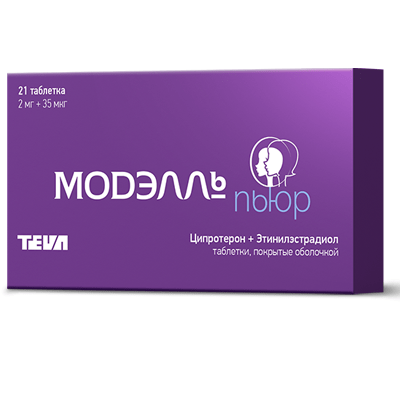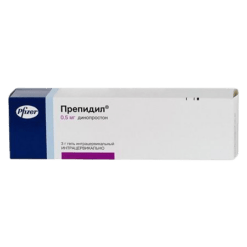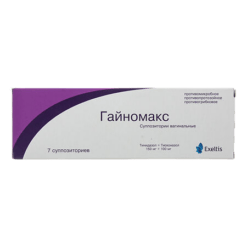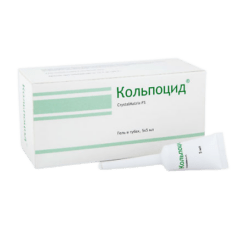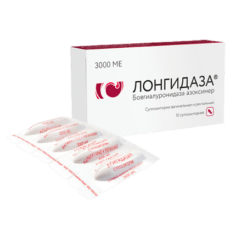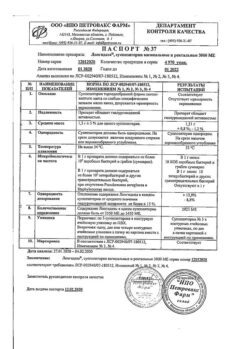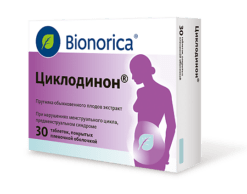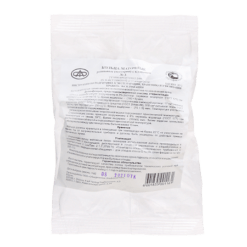No products in the cart.
Modell Pure, 2 mg+0.035 mg 21 pcs
€1.00
Out of stock
(E-mail when Stock is available)
EAN: 3850114221245
SKU: 264068
Categories: Contraceptive, Gynecology and Obstetrics, Hormonal, Medicine
Description
Pharmgroup:
The sexual hormones and modulators of the sexual system.
Pharmic action:
MODELL PURE is a combined low-dose monophasic oral contraceptive with antiandrogenic activity. The mechanism of action is caused by its constituent antiandrogenic component of the steroid structure – cyproterone acetate and oral estrogen – ethinyl estradiol.
Ciproterone acetate has the ability to competitively bind to natural androgen receptors (testosterone, dihydroepiandrosterone, androstenedione, etc.) formed in small quantities in women, mainly in the adrenal glands, ovaries and skin. By blocking androgen receptors in target organs it reduces phenomena of androgenization in women (due to disruption of processes mediated by hormone-receptor complexes at the level of main intracellular mechanisms).
Hereby the treatment of diseases caused by increased formation of androgens or specific sensitivity to these hormones becomes possible.
Modelle Pure reduces sebaceous gland activity, which plays an important role in the development of acne and seborrhea. After 3-4 months of therapy this usually leads to the disappearance of the existing rash. Excessive greasiness of the hair and skin disappears even earlier. Hair loss, which often accompanies seborrhea, is also reduced.
Therapy with Modell Pure in women of reproductive age reduces the clinical manifestations of mild forms of hirsutism; however, the effect of treatment should be expected only after several months of use.
In addition to its antiandrogenic properties, cyproterone acetate has gestagenic activity, which mimics that of corpus luteum hormone. Like other drugs with gestagenic activity, it inhibits pituitary gonadotropic hormone secretion and inhibits ovulation, which accounts for its contraceptive effect.
Ethinylestradiol enhances central and peripheral effects of cyproterone acetate on ovulation, preserves high viscosity of cervical mucus that makes it difficult for sperm to enter the uterine cavity and helps ensure reliable contraceptive effect.
With taking the drug the cycle becomes more regular, painful menstrual periods are less frequent, the intensity of bleeding decreases, and as a result the risk of iron deficiency anemia decreases.
Pharmacokinetics:
Cyproterone acetate.
Cyproterone acetate is completely absorbed from the gastrointestinal (GI) tract after administration. After oral administration of one tablet maximum plasma concentration (Cmax) is reached after 1.6 hours and is 15 ng/ml. Bioavailability is 88%.
Cyproterone acetate is almost completely bound to plasma albumin, approximately 3.5-4% is free. Because binding to proteins is nonspecific, changes in sex steroid-binding globulin (SBSG) levels do not affect the pharmacokinetics of cyproterone acetate.
The pharmacokinetics of cyproterone acetate are biphasic with a half-life (T1/2) of 0.8 hours and 2.3 days for the first and second phases, respectively. Total plasma clearance is 3.6 ml/min/kg. It is biotransformed by hydroxylation and conjugation, the main metabolite being the 15b-hydroxyl derivative. It is excreted mainly as metabolites by the kidneys and through the intestine at a ratio of 1:2, a small portion is excreted unchanged through the intestine. T1/2 for metabolites of cyproterone acetate is 1.8 days.
Ethinylestradiol.
Ethinylestradiol is quickly and completely absorbed from the gastrointestinal tract after administration. During absorption and “first passage” through the liver, ethinylestradiol undergoes intensive metabolism, which accounts for the bioavailability of approximately 45%, and its significant individual variability.
The binding to plasma proteins (albumin) is high (2% are free in plasma). Ethinylestradiol increases hepatic synthesis of hGPS and corticosteroid-binding globulin (CRBG) during continuous administration. Against the background of treatment, the serum HSPC concentration increases from approximately 100 nmol/L to 300 nmol/L, the serum concentration of CRC increases from approximately 50 µg/ml to 95 µg/ml.
The pharmacokinetics of ethinylestradiol are biphasic, with a T1/2 of 1-2 h and approximately 20 h, respectively. Plasma clearance is about 5 ml/min/kg. Ethinylestradiol is excreted from the body as metabolites; about 40% is excreted by the kidneys, 60% – through the intestine.
Indications
Indications
– treatment of women with severe androgenization (acne, especially common forms and forms accompanied by seborrhea, inflammation or formation of nodules (papular-pustular acne, nodular cystic acne), androgenetic alopecia and mild forms of hirsutism) when other methods of treating these symptoms are ineffective.
Pharmacological effect
Pharmacological effect
Pharmaceutical group:
Sex hormones and modulators of the reproductive system.
Pharmaceutical action:
MODELL PURE is a combined low-dose monophasic oral contraceptive drug with antiandrogenic activity. The mechanism of action is due to the antiandrogenic component of the steroid structure included in its composition – cyproterone acetate and oral estrogen – ethinyl estradiol.
Cyproterone acetate has the ability to competitively bind to the receptors of natural androgens (testosterone, dihydroepiandrosterone, androstenedione, etc.), formed in small quantities in the body of women, mainly in the adrenal glands, ovaries and skin. By blocking androgen receptors in target organs, it reduces the phenomenon of androgenization in women (due to disruption of processes mediated by hormone-receptor complexes at the level of basic intracellular mechanisms).
Thus, it becomes possible to treat diseases caused by increased production of androgens or specific sensitivity to these hormones.
While taking Modell Pure, the activity of the sebaceous glands, which plays an important role in the development of acne and seborrhea, decreases. After 3-4 months of therapy, this usually leads to the disappearance of the existing rash. Excessive oiliness in hair and skin disappears even earlier. Hair loss, which often accompanies seborrhea, is also reduced.
Modell Pure therapy in women of reproductive age reduces the clinical manifestations of mild forms of hirsutism; however, the effect of treatment should be expected only after several months of use.
Along with antiandrogenic properties, cyproterone acetate has gestagenic activity that imitates the properties of the corpus luteum hormone. It, like other drugs with gestagenic activity, inhibits the secretion of gonadotropic hormones by the pituitary gland and inhibits ovulation, which determines its contraceptive effect.
Ethinyl estradiol enhances the central and peripheral effects of cyproterone acetate on ovulation, maintains the high viscosity of cervical mucus, which makes it difficult for sperm to penetrate into the uterine cavity and helps ensure a reliable contraceptive effect.
While taking the drug, the cycle becomes more regular, painful menstruation is observed less frequently, the intensity of bleeding decreases, resulting in a reduced risk of iron deficiency anemia.
Pharmacokinetics:
Cyproterone acetate.
After taking the drug, cyproterone acetate is completely absorbed from the gastrointestinal tract (GIT). After oral administration of one tablet, the maximum concentration in blood plasma (Cmax) is reached after 1.6 hours and is 15 ng/ml. Bioavailability is 88%.
Cyproterone acetate is almost completely bound to plasma albumin, approximately 3.5-4% is in the free state. Because protein binding is nonspecific, changes in sex steroid binding globulin (SGBS) levels do not affect the pharmacokinetics of cyproterone acetate.
The pharmacokinetics of cyproterone acetate is biphasic, the half-life (T1/2) is 0.8 hours and 2.3 days, respectively, for the first and second phases. Total plasma clearance is 3.6 ml/min/kg. Biotransformed by hydroxylation and conjugation, the main metabolite is the 15b-hydroxyl derivative. It is excreted mainly in the form of metabolites by the kidneys and through the intestines in a ratio of 1:2, a small part – unchanged through the intestines. T1/2 for cyproterone acetate metabolites is 1.8 days.
Ethinyl estradiol.
After administration, ethinyl estradiol is quickly and completely absorbed from the gastrointestinal tract. During the process of absorption and “first pass” through the liver, ethinyl estradiol undergoes intensive metabolism, which causes a bioavailability of approximately 45% and its significant individual variability.
The connection with proteins (albumin) of the blood plasma is high (2% are found in free form in the plasma). Ethinyl estradiol increases the hepatic synthesis of SHBG and corticosteroid binding globulin (CBG) during continuous use. During treatment, the serum concentration of SHBG increases from approximately 100 nmol/l to 300 nmol/l, and the serum concentration of DSG increases from approximately 50 μg/ml to 95 μg/ml.
The pharmacokinetics of ethinyl estradiol is biphasic, T1/2 1-2 hours and approximately 20 hours, respectively. Plasma clearance is about 5 ml/min/kg. Ethinyl estradiol is excreted from the body in the form of metabolites; about 40% – by the kidneys, 60% – through the intestines.
Special instructions
Special instructions
The drug should not be used for contraceptive purposes. The drug is prescribed only for the treatment of androgenism, but since it has contraceptive properties, other hormonal contraceptive drugs should not be taken during the treatment period.
If there are risk factors, the potential risks and expected benefits of therapy should be carefully assessed and discussed with the woman before she decides to start taking the drug. If any of the following conditions or risk factors intensifies or first manifests itself, a decision must be made to discontinue the drug.
Diseases of the cardiovascular system.
There is a relationship between the use of combined oral contraceptives and an increased risk of venous and arterial thrombosis and thromboembolic processes, such as myocardial infarction, deep vein thrombosis, pulmonary embolism and cerebrovascular disorders. These diseases are rare.
The risk of developing venous thromboembolism (VTE) is greatest in the first year of taking oral contraceptives. The risk of thrombosis and thromboembolism during pregnancy is higher than when taking low-dose combined oral contraceptives (less than 0.05 mg ethinyl estradiol).
Venous thromboembolism can be fatal (in 1-2% of cases). Venous thromboembolism, manifested as deep vein thrombosis and/or pulmonary embolism, can occur with the use of any combined oral contraceptives.
In women taking combined oral contraceptives, extremely rare cases of thrombosis of other blood vessels, such as the hepatic, mesenteric, renal, cerebral arteries and veins, as well as retinal vessels, have been described. There is no consensus regarding the relationship between the occurrence of these events and the use of combined oral contraceptives.
Symptoms of deep vein thrombosis include the following: unilateral swelling in the leg or along a vein in the leg, pain or discomfort in the leg only when upright or when walking, localized warmth in the affected limb, redness or discoloration of the skin on the leg.
Symptoms of pulmonary embolism include: sudden onset of unexplained shortness of breath or rapid breathing, a sudden attack of coughing that may be accompanied by hemoptysis, severe chest pain that may worsen with deep breathing, anxiety, severe dizziness; fast or irregular heartbeat. Some of these symptoms (eg, “shortness of breath” and “cough”) are nonspecific and may therefore be misinterpreted as signs of more common and less severe conditions (eg, respiratory tract infection).
Arterial thromboembolism may include cerebrovascular events, vascular occlusion, or myocardial infarction.
Symptoms of cerebrovascular disorders may include sudden weakness or numbness of the face, upper or lower extremities, especially on one side of the body, sudden confusion, difficulty speaking, or difficulty with perception; sudden loss of vision in one or both eyes, sudden disturbance in gait, dizziness, loss of balance or coordination, sudden severe or prolonged headache for no apparent reason, loss of consciousness or fainting with or without a seizure. Other signs of vascular occlusion may also include sudden pain, swelling or mild blueness of the extremities, and symptoms of an “acute abdomen.”
Symptoms of myocardial infarction include: pain, discomfort, pressure, heaviness, a feeling of squeezing or fullness in the chest, arm or chest, a feeling of discomfort radiating to the back, cheekbones, larynx, arm, stomach, a feeling of fullness or fullness in the stomach, a feeling of suffocation, cold sweat, nausea, vomiting or dizziness, severe weakness, anxiety, shortness of breath, rapid or Irregular heartbeat.
Arterial thromboembolism can be fatal.
The risk of developing thrombosis (venous and/or arterial), thromboembolic or cerebrovascular disorders increases:
– with age
– in smokers (with an increase in the number of cigarettes or an increase in age, the risk further increases, especially in women over 35 years of age);
– if there is a family history (i.e., venous or arterial thromboembolism ever occurred in close relatives or parents at a relatively young age). If a hereditary predisposition is known or suspected, the woman should consult a doctor to decide whether to take combined oral contraceptives
– for obesity (body mass index more than 30 kg/m2)
– for dyslipoproteinemia
– for arterial hypertension
– for migraine
– for heart valve disease
– for atrial fibrillation
– prolonged immobilization, major surgery, any leg surgery or major trauma. In these situations, it is advisable to stop using combined oral contraceptives (in the case of planned surgery, at least four weeks before it) and not to resume use for two weeks after the end of immobilization.
The possible role of varicose veins and superficial thrombophlebitis in the development of venous thromboembolism remains controversial. The increased risk of thromboembolism in the postpartum period should be taken into account.
Circulatory abnormalities may also occur in diabetes mellitus, polycystic ovary syndrome, systemic lupus erythematosus, hemolytic uremic syndrome, chronic inflammatory bowel disease (Crohn’s disease or ulcerative colitis) and sickle cell anemia.
An increase in the frequency and severity of migraines during use of combined oral contraceptives (which may precede cerebrovascular events) may be grounds for immediate discontinuation of these drugs.
Biochemical parameters that may be indicative of hereditary or acquired susceptibility to venous or arterial thrombosis include activated protein C resistance, hyperhomocysteinemia, antithrombin-III deficiency, protein C deficiency, protein S deficiency, antiphospholipid antibodies (anticardiolipin antibodies, lupus anticoagulant).
Tumors.
There is a slightly increased relative risk of developing breast cancer diagnosed in women who were using combined oral contraceptives at the time of the study, which is due to earlier diagnosis of breast cancer in these women, the biological effects of combined oral contraceptives, or a combination of both factors.
In rare cases, the development of benign liver tumors and, in even more rare cases, the development of malignant liver tumors have been observed during the use of combined oral contraceptives. In some cases, liver tumors can lead to life-threatening intra-abdominal bleeding. If severe pain in the upper abdomen, liver enlargement, or signs of intra-abdominal bleeding occur, liver tumor should be considered in the differential diagnosis.
Other states.
Women with hypertriglyceridemia (or a family history of this condition) may have an increased risk of developing pancreatitis while taking combined oral contraceptives.
Although mild increases in blood pressure have been described in many women taking combined oral contraceptives, clinically significant increases have rarely been reported. However, if a persistent, clinically significant increase in blood pressure develops while taking combined oral contraceptives, these drugs should be discontinued and treatment of hypertension should be initiated. Taking combined oral contraceptives can be continued if normal blood pressure values are achieved with antihypertensive therapy.
The following conditions observed during pregnancy may also appear or worsen when taking combined oral contraceptives: jaundice and/or itching associated with cholestasis; formation of gallstones; porphyria; systemic lupus erythematosus; hemolytic uremic syndrome; chorea; herpes during pregnancy; hearing loss associated with otosclerosis. However, the relationship between the development of these conditions and the use of combined oral contraceptives has not been proven.
In women with hereditary angioedema, exogenous estrogens can provoke or aggravate the symptoms of this disease.
In the presence of acute or chronic liver dysfunction, it is necessary to consider stopping the use of combined oral contraceptives until liver function tests return to normal. If recurrent cholestatic jaundice develops, which develops for the first time during pregnancy or previous use of sex hormones, you should stop taking combined oral contraceptives.
Although combined oral contraceptives may have an effect on insulin resistance and glucose tolerance, there is no need to change the therapeutic regimen in diabetic patients using low-dose combined oral contraceptives (<0.05 mg ethinyl estradiol). However, women with diabetes mellitus should be carefully monitored while taking combined oral contraceptives.
Manifestations of Crohn’s disease and ulcerative colitis have been observed during the use of combined oral contraceptives.
Women prone to chloasma should avoid prolonged exposure to the sun and ultraviolet radiation while taking combined oral contraceptives.
If symptoms have recently developed or become significantly worse in women suffering from hirsutism, other causes, such as androgen-producing tumor, congenital adrenal dysfunction, should be considered in the differential diagnosis.
Medical examinations.
Before starting to use Modell Pure, as well as periodically during the use of the drug, a woman is recommended to undergo a thorough general medical and gynecological examination (including blood pressure measurement, examination of the mammary glands, abdominal and pelvic organs, including a cytological examination of cervical mucus), and exclude pregnancy. In addition, disorders of the blood coagulation system should be excluded. It is important to conduct periodic medical examinations, since contraindications, such as transient ischemic attacks and others, or risk factors, such as a hereditary predisposition to venous or arterial thrombosis, may appear during the use of Modell Pure.
A woman should be warned that drugs like Modell Pure do not protect against HIV infection (AIDS) and other sexually transmitted diseases!
Reduced efficiency.
The effectiveness of combined oral contraceptives may be reduced if pills are missed, vomiting or diarrhea occurs, or due to drug interactions.
Effect on the menstrual cycle.
While taking combined oral contraceptives, irregular bleeding (spotting or breakthrough bleeding) may occur, especially during the first months of use. Therefore, any irregular bleeding should be assessed only after an adaptation period of approximately three cycles.
If irregular bleeding recurs or develops after previous regular cycles, a thorough examination, including diagnostic curettage, should be performed to rule out malignancy or pregnancy.
Some women may not develop withdrawal bleeding during a break from taking the tablets. If combined oral contraceptives are taken as directed, the woman is unlikely to be pregnant. However, if combined oral contraceptives have not been taken regularly before or if there are no consecutive withdrawal bleeds, pregnancy should be ruled out before continuing to take the drug.
During the treatment period, the results of skin allergy tests may change, the concentration of luteinizing hormone (LH) and follicle-stimulating hormone (FSH) may decrease.
Treatment should be stopped immediately 3 months before a planned pregnancy and approximately 6 weeks before planned surgery or long-term immobilization.
Features of the effect of the drug on the ability to drive a vehicle or potentially dangerous mechanisms.
Does not affect
Active ingredient
Active ingredient
Cyproterone, Ethinylestradiol
Composition
Composition
1 tab.:
– cyproterone acetate micronized 2 mg
– micronized ethinyl estradiol 0.035 mg
excipients:
lactose monohydrate,
corn starch,
povidone K25,
talc,
magnesium stearate,
shell composition:
sucrose, calcium carbonate, talc, titanium dioxide E171, povidone K 90, polyethylene glycol 6000, glycerol 85%, iron oxide pigment, glycol mountain wax
Contraindications
Contraindications
Preparations containing a combination of estrogen/progestins should not be used if any of the conditions listed below are present.
– hypersensitivity to any of the components of the drug MODELL PURE
– thrombosis/thromboembolism (venous and arterial) currently or in history (for example, deep vein thrombosis, pulmonary embolism, myocardial infarction, cerebrovascular disorders)
– conditions preceding thrombosis (for example, transient ischemic attacks, angina) currently or in history
– presence of pronounced or multiple risk factors for venous or arterial thrombosis
– migraine with focal neurological symptoms in history
– diabetes mellitus with vascular complications
– severe liver disease until liver function tests return to normal
– liver tumors (benign or malignant) currently or in history
– identified or suspected hormone-dependent malignant diseases (for example, genital organs or mammary glands)
– vaginal bleeding of unknown origin
– pregnancy or suspicion of it
– lactation period
– arterial hypertension
– uterine bleeding of unknown etiology
– pancreatitis (including a history), if it was accompanied by severe hypertriglyceridemia
– congenital hyperbilirubinemia (Gilbert, Dabin-Johnson and Rotor syndromes)
– sickle cell anemia
– idiopathic jaundice or itching during a previous pregnancy
– otosclerosis worsening during pregnancy
– hyperprolactinemia
With caution – epilepsy, depression, ulcerative colitis, liver and gall bladder diseases, uterine fibroids, mastopathy, chorea, tetany, porphyria, multiple sclerosis, varicose veins, tuberculosis, kidney disease, adolescence (without regular ovulatory cycles).
Side Effects
Side Effects
Frequently:
– headache, depressed mood, mood changes
– nausea, abdominal pain
– weight gain
– soreness and tension of the mammary glands
Uncommon:
– migraine
– vomiting, diarrhea
– fluid retention in the body
– enlargement of the mammary glands
– rash, urticaria
– decreased libido
Rare:
– hypersensitivity reactions
– poor tolerance to contact lenses
– weight loss
– increased libido
– vaginal discharge, discharge from the mammary glands
– rash, erythema nodosum, erythema multiforme, age spots on the face (chloasma)
The following serious side effects have been reported in women using combined oral contraceptives:
– venous thromboembolic disorders
– arterial thromboembolic disorders
– cerebrovascular disorders
– arterial hypertension
– hypertriglyceridemia
– impaired glucose tolerance or effects of peripheral insulin resistance
– liver tumors (benign and malignant)
– liver dysfunction
– chloasma
– in women with hereditary angioedema, provocation or exacerbation of symptoms of the disease under the influence of exogenous estrogens
– the appearance or worsening of the following conditions, the relationship of which with the use of combined oral contraceptives has not been proven: jaundice and/or itching associated with cholestasis; formation of gallstones; porphyria; systemic lupus erythematosus; hemolytic uremic syndrome; chorea; herpes during pregnancy; hearing loss associated with otosclerosis, Crohn’s disease and ulcerative colitis, cervical cancer.
Interaction
Interaction
Substances affecting the effectiveness of Modell Pure (liver enzyme inducers and antibiotics).
Medicines that reduce the contraceptive effectiveness of the drug include drugs that induce liver enzymes and antibiotics. While taking them and for 7 days after their discontinuation, you should additionally use a barrier method of contraception.
Induction of liver enzymes (increased hepatic metabolism): The use of drugs that induce microsomal liver enzymes may lead to an increase in the clearance of sex hormones. These drugs include: phenytoin, barbiturates, primidone, carbamazepine and rifampicin; There are also suggestions for oxcarbazepine, topiramate, felbamate, ritonavir and griseofulvin and products containing St. John’s wort.
In addition, HIV proteases (eg, ritonavir) and non-nucleoside reverse transcriptase inhibitors (eg, nevirapine), and combinations thereof, may potentially increase hepatic metabolism.
Effect on enterohepatic circulation.
According to some clinical studies, certain antibiotics (for example, penicillins and tetracyclines) may reduce the intrahepatic circulation of estrogens, thereby lowering the concentration of ethinyl estradiol.
Effect of estrogen/progestogen combinations on other drugs.
Estrogen/progestagen combinations, like Modell Pure, may affect the metabolism of certain other drugs, resulting in an increase (for example, cyclosporine) or a decrease (for example, lamotrigine) in their plasma and tissue concentrations.
Laboratory tests.
Taking drugs like Modell Pure may affect the results of some laboratory tests, including liver, kidney, thyroid, adrenal function, plasma levels of transport proteins, carbohydrate metabolism, coagulation and fibrinolysis parameters. Changes usually do not go beyond normal values.
Overdose
Overdose
Symptoms: nausea, vomiting, slight vaginal bleeding.
Treatment: symptomatic. There is no specific antidote.
Manufacturer
Manufacturer
Haupt Pharma Münster GmbH, Germany
Additional information
| Manufacturer | Haupt Pharma Münster GmbH, Germany |
|---|---|
| Medication form | pills |
| Brand | Haupt Pharma Münster GmbH |
Related products
Gynecology and Obstetrics
Prepidil, intracervical gel 0.5 mg/3 g syringes with catheter
Gynecology and Obstetrics
Gynecology and Obstetrics
Buy Modell Pure, 2 mg+0.035 mg 21 pcs with delivery to USA, UK, Europe and over 120 other countries.

